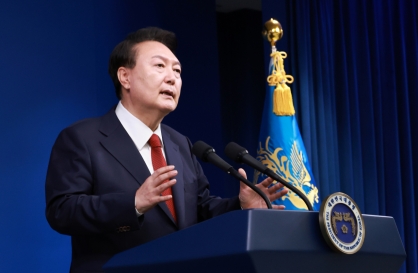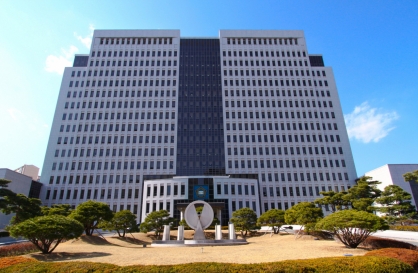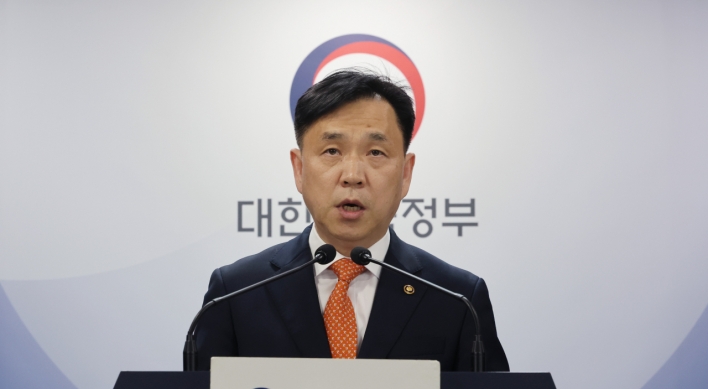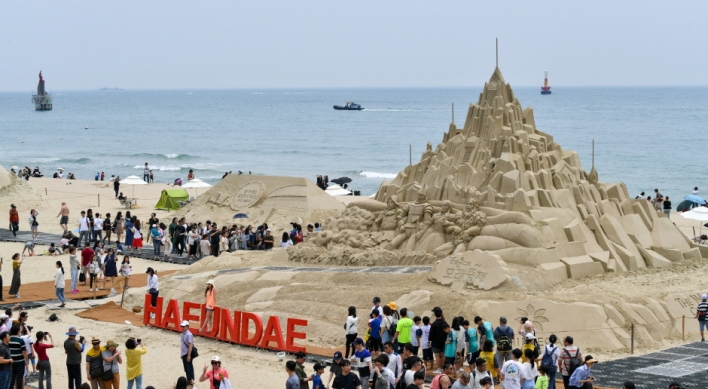The U.S. Congress appears to be raising pressure on South Korea to join the U.S.-led missile defense system with a bill calling on the Washington government to explore ways to strengthen ballistic missile defense cooperation with Seoul and Tokyo.
The 2015 National Defense Authorization Act, which passed the House of Representatives last Thursday, also calls on the Defense Secretary to “conduct an assessment to identify opportunities” to increase the three-way missile defense cooperation.
The legislation also requests that the secretary evaluate such areas as information sharing, systems integration and joint operations, and submit a related report to Congress within six months of the effectuation of the act.
To be enacted, the bill requires Senate deliberations. But observers say that it is likely to cruise through, given that the Senate has stressed the need to bolster the triangular missile defense collaboration to better deal with potential adversaries such as North Korea.
Seoul has long been reluctant to join the U.S.-led global defense program for fear that its participation would cause diplomatic friction with Beijing and Moscow, not to mention Pyongyang, all of which believe that the U.S. MD program would target them.
Instead of participating in the U.S. program, Seoul has sought to develop an independent missile shield, called the “Korea Air and Missile Defense” system. The KAMD is a low-tier, multiple-interception program, which destroys incoming missiles at altitudes of 40-50 km with multiple interceptors.
Seoul officials reaffirmed that South Korea would not join the U.S. MD, but they pointed to the need to ensure “interoperability” between the KAMD and the U.S. MD system in light of Pyongyang’s increasing missile threats.
Seoul’s Defense Ministry dismissed the speculation that Seoul could purchase interception systems, such as the Standard Missile-3 mid-course interceptor, that go beyond the coverage of Korea’s envisioned missile defense program.
“We have never considered purchasing the SM-3, and the KAMD and MD are being built separately,” ministry spokesperson Kim Min-seok told reporters.
The U.S. MD program, which targets long-range missiles, is a multi-layered defense program employing various interception systems at the three major stages.
At the boost stage, an airborne laser is to be mobilized to incapacitate a hostile missile, while during the mid-course stage, Ground-Based Interceptors in Alaska or sea-based SM-3 missiles are to be used. For the terminal stage, the Terminal High Altitude Area Defense, Arrow antiballistic missiles or Patriot Advanced Capabili-3 are mobilized.
But the KAMD is designed to shoot down shorter-range North Korean missiles with the PAC-2 or PAC-3 missiles.
By Song Sang-ho (sshluck@heraldcorp.com)
The 2015 National Defense Authorization Act, which passed the House of Representatives last Thursday, also calls on the Defense Secretary to “conduct an assessment to identify opportunities” to increase the three-way missile defense cooperation.
The legislation also requests that the secretary evaluate such areas as information sharing, systems integration and joint operations, and submit a related report to Congress within six months of the effectuation of the act.
To be enacted, the bill requires Senate deliberations. But observers say that it is likely to cruise through, given that the Senate has stressed the need to bolster the triangular missile defense collaboration to better deal with potential adversaries such as North Korea.
Seoul has long been reluctant to join the U.S.-led global defense program for fear that its participation would cause diplomatic friction with Beijing and Moscow, not to mention Pyongyang, all of which believe that the U.S. MD program would target them.
Instead of participating in the U.S. program, Seoul has sought to develop an independent missile shield, called the “Korea Air and Missile Defense” system. The KAMD is a low-tier, multiple-interception program, which destroys incoming missiles at altitudes of 40-50 km with multiple interceptors.
Seoul officials reaffirmed that South Korea would not join the U.S. MD, but they pointed to the need to ensure “interoperability” between the KAMD and the U.S. MD system in light of Pyongyang’s increasing missile threats.
Seoul’s Defense Ministry dismissed the speculation that Seoul could purchase interception systems, such as the Standard Missile-3 mid-course interceptor, that go beyond the coverage of Korea’s envisioned missile defense program.
“We have never considered purchasing the SM-3, and the KAMD and MD are being built separately,” ministry spokesperson Kim Min-seok told reporters.
The U.S. MD program, which targets long-range missiles, is a multi-layered defense program employing various interception systems at the three major stages.
At the boost stage, an airborne laser is to be mobilized to incapacitate a hostile missile, while during the mid-course stage, Ground-Based Interceptors in Alaska or sea-based SM-3 missiles are to be used. For the terminal stage, the Terminal High Altitude Area Defense, Arrow antiballistic missiles or Patriot Advanced Capabili-3 are mobilized.
But the KAMD is designed to shoot down shorter-range North Korean missiles with the PAC-2 or PAC-3 missiles.
By Song Sang-ho (sshluck@heraldcorp.com)
-
Articles by Korea Herald





![[K-pop’s dilemma] Can K-pop break free from ‘fandom’ model?](http://res.heraldm.com/phpwas/restmb_idxmake.php?idx=644&simg=/content/image/2024/05/09/20240509050541_0.jpg&u=20240509173751)




![[News Analysis] Yoon's first 2 years marked by intense confrontations, lack of leadership](http://res.heraldm.com/phpwas/restmb_idxmake.php?idx=644&simg=/content/image/2024/05/09/20240509050612_0.jpg&u=20240509233252)








![[Today’s K-pop] NCT’s Mark to drop 1st solo album in February 2025](http://res.heraldm.com/phpwas/restmb_idxmake.php?idx=642&simg=/content/image/2024/05/10/20240510050597_0.jpg&u=)